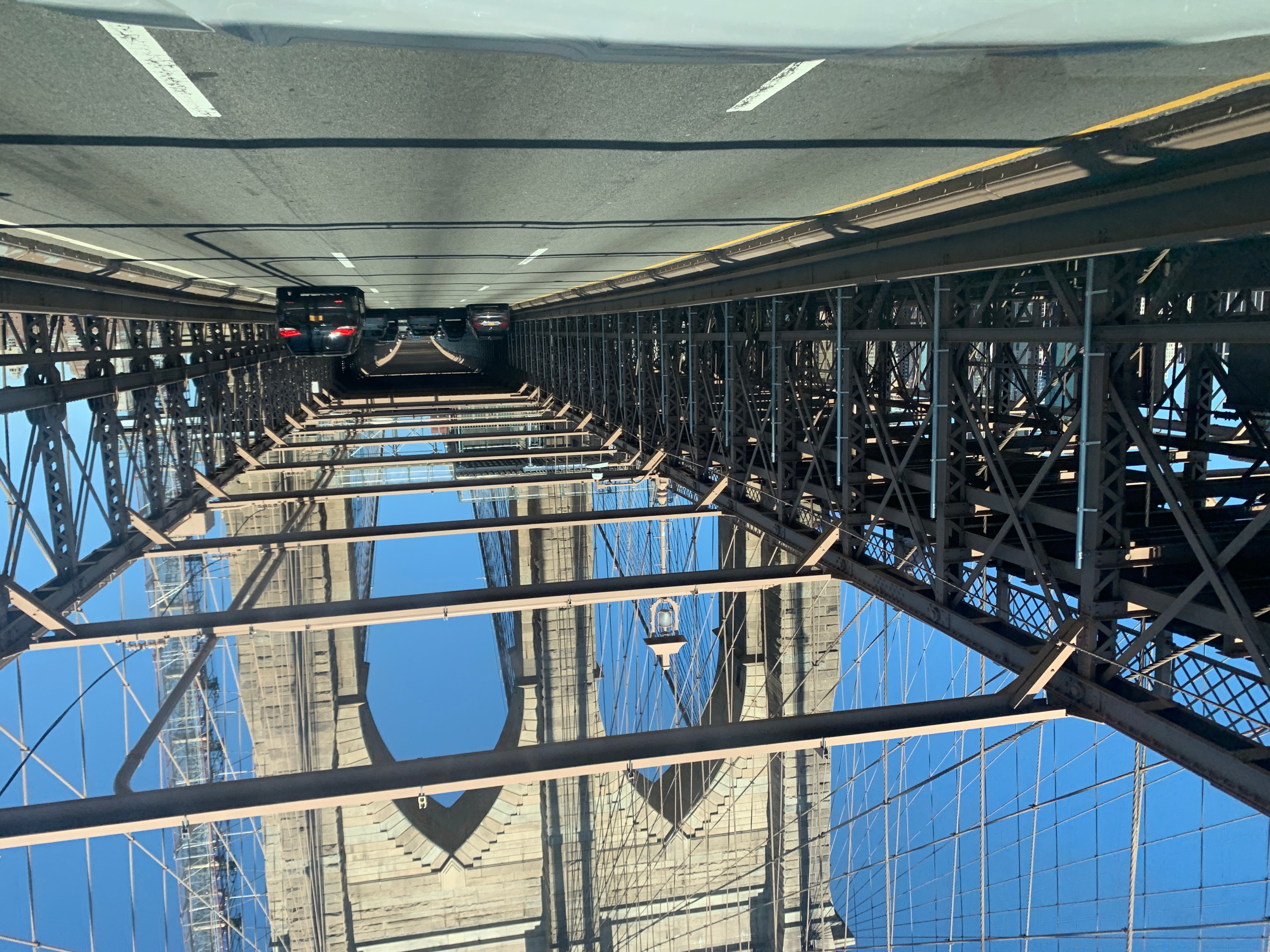The construction of the protected bike path on the Brooklyn Bridge — one of the most significant clawbacks of space seized by drivers generations ago — will begin in earnest on Monday night at 9 p.m., Mayor de Blasio just said.
The work — which will set aside the left-most westbound lane on the fabled span as a two-way bike path in hopes of again restoring the narrow foot and bike path above to safety and sanity — is expected to be completed by the fall.
"It will be a beautiful and radical reimagining of a New York City icon," the mayor said. "It's part of an ambitious plan to create 30 miles of protected bike lanes this year."
Some preliminary work has already been done on the 137-year-old bridge, but on Monday night, the car restrictions begin. A DOT worker was handing out fliers to drivers at a traffic light on Adams Street this morning, advising drivers that the right turn from westbound Tillary Street onto the Brooklyn Bridge will no longer be permitted — and DOT says that's a permanent change to eliminate conflicts between drivers and cyclists (who mostly use westbound Tillary to access the bridge bike path).
@StreetsblogNYC Looks like the Brooklyn Bridge bike lane work is progressing as @NYC_DOT is installing new fencing along the center gap of the bridge pic.twitter.com/K8F1xsFRWg
— Jason Rabinowitz (@AirlineFlyer) April 28, 2021
And DOT workers were changing signs on the bridge, while nearby, concrete Jersey barriers were stockpiled at the dead-end end of Sands Street, as this slideshow shows:
The construction of the Brooklyn Bridge bike lane is seen as the biggest change in the bridge since the last trolley tracks were removed in 1950, eliminating the bridge from the city's public transit network and reducing the bridge's overall people-moving capacity in half, the mayor said.
The mayor's plan to take a lane away from cars is certainly audacious, but it is also a quicker, easier version than a plan once considered by his own Department of Transportation to dramatically widen the existing pedestrian and cycle path. Renderings from 2016 show walkways extending over the roadway, a plan that would have cost scores of millions of dollars and was ultimately squashed amid claims from the DOT that it was unsure if the bridge's old cables could handle the strain (it is unclear if that DOT's cable study has ever been completed anyway).
The plan to take a lane away from drivers on the Brooklyn Bridge (and, later this year, the Queensboro Bridge) are part of a relatively modest effort by the de Blasio administration to reuse existing car space to encourage cycling and discourage car use. The administration also repurposed thousands of parking spaces for outdoor dining areas for the city's struggling restaurant industry, and has created roughly 60 miles of open streets that restrict thru traffic and cap its speed at 5 miles per hour. (The city is currently considering what to do with its best open street, on 34th Avenue in Queens, with all the major mayoral candidates demanding that it be turned into a linear park.)
Amid the hoopla, it is important to note that the two-way, eight-foot-wide lane does not meet national standards and cyclists have been checking the teeth of this particular gift horse since the day de Blasio announced it in his State of the City address in January.
According to the National Association of City Transportation Officials, a two-way bike path should be at least 12 feet wide. The mayor's plan for an eight-foot-wide two-way bike path is the group's "minimum width" recommendation. The group also recommends an additional buffer, but that won't be possible on the Brooklyn Bridge because of the need for a sturdy cement barrier to keep cars from hitting cyclists.
Also, fun fact: The Brooklyn Bridge has a seemingly unenforced weight restriction that caps passenger vehicles to 6,000 pounds. So if you see a Chevy Suburban on the Brooklyn Bridge, there's a good chance its driver is breaking the law.
Postscript: Our reporter chatted up a DOT worker handing out fliers on Adams Street on Thursday morning and asked what he thought of the removal of the polluting car lane in favor of sustainable transportation.
“Personally I think it’s a terrible idea," he said, revealing the persistent gap among different DOT divisions. "But for bike riders, it should be great.”
— with Henry Beers Shenk






